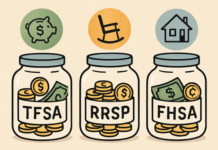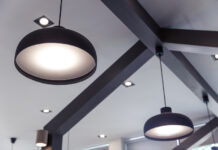The tornado is one of those weather phenomena that can provide little more than a moment or two of warning before it strikes. A good safe room plan makes preparing a home for these storms a little easier and gives people peace of mind, protecting them from the winds and debris outside. This article contains useful tips on how families can build a safe room and protect themselves when a tornado is close.
The Significance of a Safe Room
To learn how to prepare your home for a tornado, you need to understand the significance of a safe room. A safe room is a storm shelter that protects a stand-alone room in the home. These rooms are built to protect against high winds and flying debris. Homeowners who opt to include a safe room are proactive about planning for emergencies and want to protect their family from natural disasters by prioritizing safety.
Choosing the Right Location
Selecting the ideal location for a safe room is a crucial decision. It should be on the ground floor but away from windows and outside walls, if possible. Basements are great places to go to because they are below the ground, which gives you a bit more protection. But if you don’t have a basement, an interior room or closet will work just as well.
Construction and Reinforcement
Designating a safe room for your family is the first step. Reinforcement is crucial. Strengthen ceilings, doors, and walls to withstand high winds. The suggested materials are reinforced concrete or steel, which are durable. A professional will be able to ensure the safe room conforms to safety standards and provides adequate protection.
Essential Features and Supplies
The safe room should be stocked full of essentials to help people survive and get through an emergency. Collect non-perishable food products, drinking water, a first-aid kit, and basic tools. A battery-operated radio or a mobile phone that is fully charged plays a very important role in these situations. Additionally, include flashlights and extra batteries to prepare for power outages.
Incorporating Technology and Safety Measures
In modern times, technology can also improve the functionality of a safe room. Having a way to install a weather radio can give you warnings for severe conditions, and keeping a backup generator can keep critical equipment running. Homeowners can also monitor conditions and receive emergency alerts on their devices.
Planning and Practice
A safe room is only part of the preparation; families need to learn how to use it. Regular drills are necessary to acquaint everyone with the location of the venue, necessary actions, and safety measures during a tornado. These should include means to quickly obtain supplies and to lock down the space.
Maintaining the Safe Room
The room must be maintained to ensure it remains effective. Frequent inspections are required to make sure it retains its structural integrity and keep the supplies fresh and operational. It is a good idea to periodically update emergency kits to make sure everything is in working order when required.
Community Resources and Support
Many communities have resources you can use to help plan for your safe room. Local authorities and emergency services can offer relevant information and assistance. By utilizing these resources, you can navigate the complex safety language and gain access to funding or assistance programs.
Encouraging Neighbor Participation
Exchanging knowledge and resources cultivates an atmosphere that benefits all, as everyone becomes more prepared. Working together to build a neighborhood that is safer and more closely knit.
Conclusion
Having a safe room significantly improves your household’s safety during tornadoes. Knowing the significance of these areas, choosing a strategic location and appropriate materials for reinforcement, and stocking up on supplies can help families prepare for a tornado. In addition, regular practice and maintenance will enhance your preparedness, allowing you to feel more at ease during uncertain situations.
Find a Home-Based Business to Start-Up >>> Hundreds of Business Listings.















































